Kingdom Fungi Rank Family | Division Basidiomycota Scientific name Corticiaceae | |
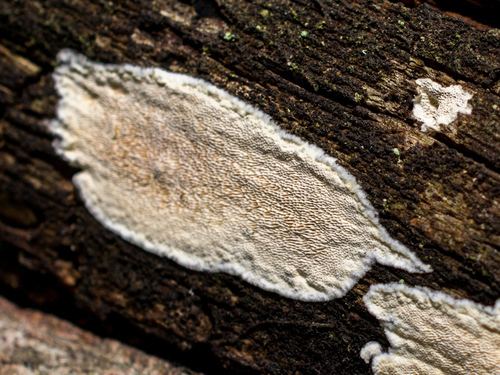 | ||
Corticiaceae fungi kingdom
The Corticiaceae are a family of fungi in the order Corticiales. The family formerly included almost all the corticioid (patch- or crust-forming) fungi, whether they were related or not, and as such was highly artificial. In its current sense, however, the name Corticiaceae is restricted to a comparatively small group of mainly corticioid genera within the Corticiales, though the family is as yet not well defined.
Contents
- Corticiaceae fungi kingdom
- Blue corticiaceae
- History
- Current status
- Description
- Habitat and distribution
- Economic importance
- References

Blue corticiaceae
History
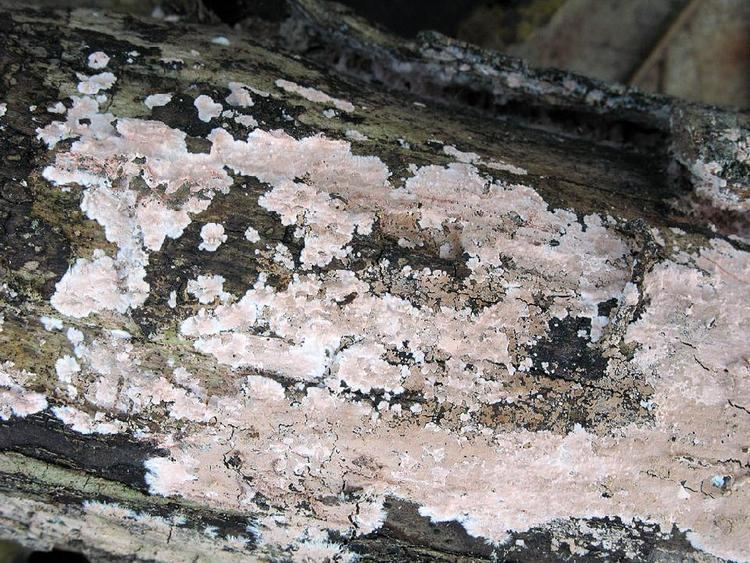
The German mycologist Wilhelm Gustav Franz Herter first published the Corticiaceae in 1910 to accommodate species of hymenomycetes that produced basidiocarps (fruit bodies) which were effused (spread out and patch-like) and had a more or less smooth hymenophore (spore-bearing surface). Since this definition was vague, superficial, and covered a large range of unrelated fungi, the Corticiaceae, though widely adopted, were also widely recognized as an unnatural grouping. Indeed, in a 1964 survey of families, Donk considered the Corticiaceae to be "a nice example of how extremely artificial taxa can be".
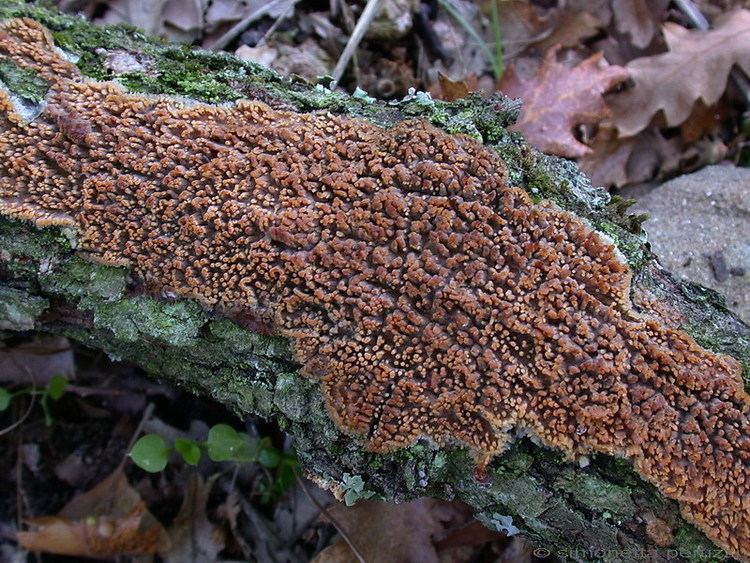
In this wide sense, the boundaries of the Corticiaceae were never clearly defined. It was sometimes separated from the Stereaceae, a family in which fruitbodies had a tendency to form pilei (caps or brackets), but often these two artificial families were united. In this united sense, the Corticiaceae certainly included the genera and species treated in the standard, 8-volume reference work The Corticiaceae of North Europe (1972-1987), where it was acknowledged that the family was "not a natural taxon but an assemblage of species with similar habitat." With the addition of non-European species, this meant that the Corticiaceae eventually expanded to include over 200 genera worldwide. The name "Corticiaceae" is still occasionally used in this wide sense (sensu lato), but it has generally been replaced by the term "corticioid fungi".

Earlier family names for the Corticiaceae s.l. are the Cyphellaceae, Peniophoraceae, and Vuilleminiaceae, as noted by Donk in 1964. Since the name Corticiaceae was so commonly used, it was officially conserved against these earlier names under the International Code of Botanical Nomenclature. This only applies, however, if the suppressed names are considered to be synonyms, rather than distinct families separate from the Corticiaceae.
Current status
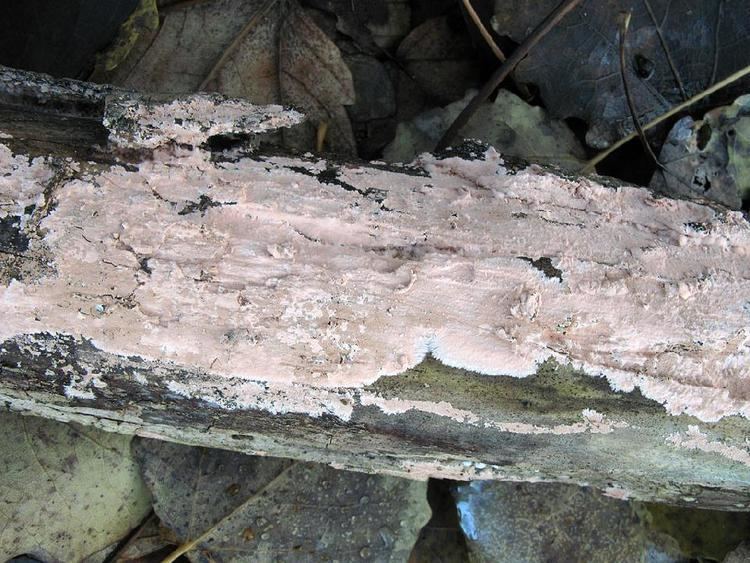
Molecular research, based on cladistic analysis of DNA sequences, has limited the Corticiaceae in its strict sense (sensu stricto) to a comparatively small group of genera within the Corticiales. The family, however, remains undefined. Larsson, in 2007, treated it as synonymous with the order, but the resurrection of the Punctulariaceae and Vuilleminiaceae within the Corticiales now leaves the Corticiaceae as a "dustbin taxon" for the leftover genera. As such, the family contains some 27 genera and over 100 species.
Description

Though now based on molecular phylogenetics, the Corticiaceae s.s. have certain features partly in common. Basidiocarps, for example, have a tendency to be pink or orange, as in the type species of Corticium, (C. roseum), and species in genera such as Erythricium, Laetisaria, Limonomyces, and Marchandiobasidium. Several of the Corticiaceae also produce sclerotia, bulbils, or other anamorphic (asexual) propagules, including species in the genera Corticium, Laetisaria, Marchandiobasidium, and Waitea. Species in the genus Marchandiomyces are entirely anamorphic. Finally, many of the Corticiaceae s.s. are obligate or facultative pathogens, such as Marchandiobasidium aurantiacum and Marchandiomyces corallinus on lichens and Erythricium salmonicolor, Laetisaria spp, Limonomyces spp, and Waitea circinata on grasses and other plants.
Habitat and distribution

The majority of species in the Corticiaceae are wood-rotting saprotrophs, typically forming corticioid basidiocarps on the undersides of dead, attached branches, less commonly on fallen wood. Several species are parasites of lichens, grasses, or other plants. Guilia tenuis is a pycnidial anamorph growing on bamboo. The anomalous agaric species, Marchandiomphalina foliacea, is lichenized. Collectively, they have a cosmopolitan distribution.
Economic importance
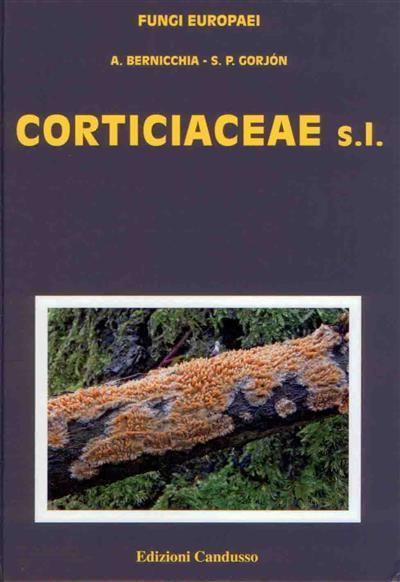
Several species within the Corticiaceae are commercially important pathogens of crops or turf grass. Erythricium salmonicolor attacks woody commercial crops (citrus, coffee, rubber, etc.) in the tropics, causing "pink disease". Waitea circinata is also a pathogen, causing diseases of cereal crops, including "sheath spot" of rice. The same fungus also causes "brown ring patch" in turf grasses. Laetisaria fuciformis is the cause of "red thread" disease in turf grass, whilst Limonomyces roseipellis is the cause of "pink patch" disease.
